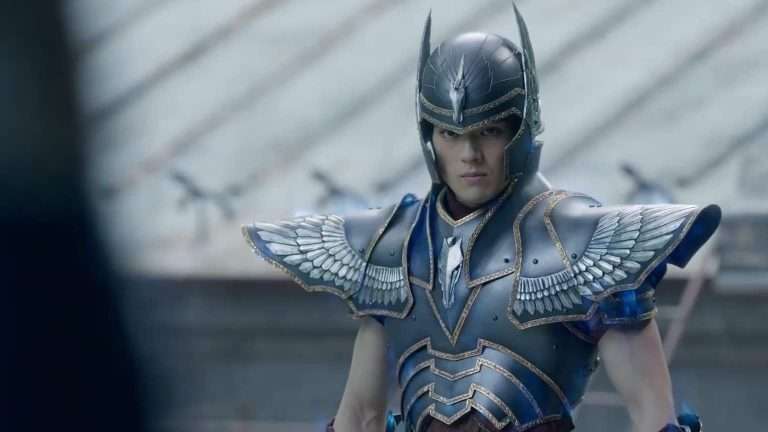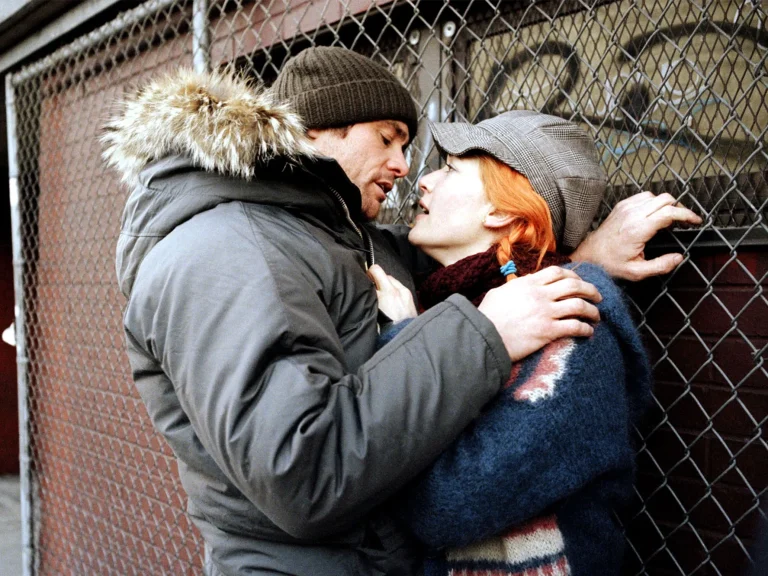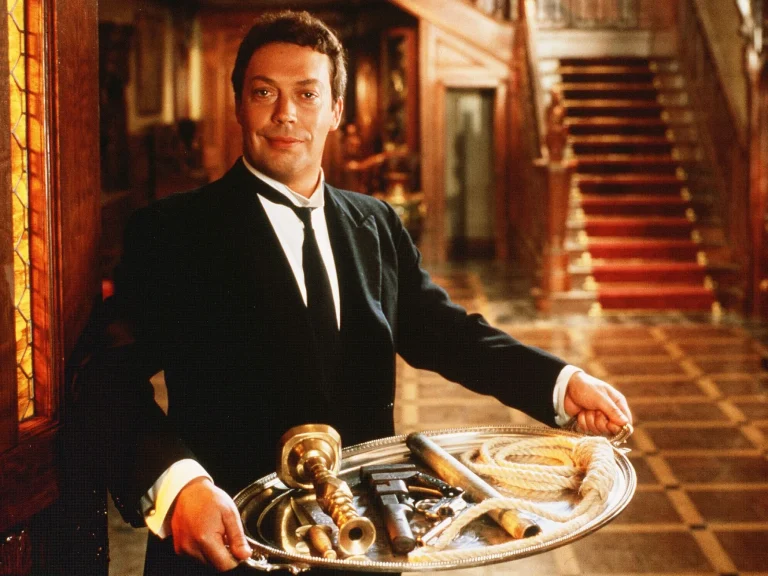The horror genre involving supernatural or unexplainable creatures that break the basic rules of human life and conception is nothing new. It is also nothing new that stories involving these monsters tend to be more about providing a visceral rush or exploration of heightened emotionality, be it with vampires or werewolves. In the case of the zombies or the undead, the setting tends to be mostly apocalyptic, with a prime focus not only on the external monstrosity but also on a comparative study of the internal monsters present within the crevasses of humanity.
Then comes the sub-genre within the specific genre—the slow-burn exploration of the darkness within humanity as they face and try to co-exist with these “monsters.” One of the horror writers at the forefront of this sub-genre is Swedish author John Andjive Lynqvist. His book “Let the Right One In” (2004) and its adaptations (“Let the Right One In” (2008) and “Let Me In” (2011)) delve into the friendship between a 12-year-old boy and a 200-year-old vampire stuck in the body of a child in the 1980s suburbs of Stockholm. The 2018 film “Border,” directed by Ali Abbasi, adapts Linqvist’s short story of the same name from the anthology “Let the Old Dreams Die.” The film follows the relationship between a customs service worker and a maggotkeeper. It slowly begins to unfold itself as a modern-day fairy tale about trolls and their furtive existence in Finland.
This 2024 film, “Handling the Undead,” from debutant director Thea Hvistendahl, uses a screenplay co-written by Hvistendahl and Lynqvist and is based on Lynqvist’s 2005 novel of the same name. It follows a somewhat similar pattern of recontextualizing “monsters”—this time, the focus is on the undead or zombies, but also the trauma of loss and the processing of grief for the survivors.
Handling the Undead (2024) Plot Summary & Movie Synopsis:
While the story’s premise is that of a typical zombie novel, it is also definitively a more melancholic and somber affair than the traditional zombie novel. It posits the question of how a family, having recently suffered the loss of a loved one, deals when that loved one inexplicably returns from the dead.
Which families are involved in the event?
The movie opens on a hot summer day in Oslo, where Mahler (Bjorn Sundquist) goes to meet his daughter Anna (Renate Reinsve) at the adjacent apartment complex. She is playing music quite loudly at her apartment while painting her toenails and getting ready for work. There are pictures around the house of a young child. But the house remains empty, and the absence of the child might suggest a strained relationship between father and daughter. Anna works as kitchen staff at a restaurant and mostly stays aloof from the rest of the populace around her while her father visits the grave of his grandson, who had passed away fairly recently. He is so fraught with loss that he doesn’t leave the grave.
The film then shifts to Tora (Bente Dorsum), an octogenarian, at the funeral of her partner, Elisabet (Olga Damani). Once the funeral is finished, Tora returns home to the apartment the two women had shared, presumably for a very long time, and ignores calls, if only to process her grief alone. The final segmentation, or the third familial unit we explore, is the one of David (Anders Danielsen Lie) and Eva (Bahar Pars), along with their children Flora (Inesa Dakusta) and Kian (Kian Hansen). Flora is reluctant to look after her little brother; while their parents go out, she goes to work while he prepares for his comedy show.
What is the inciting event?
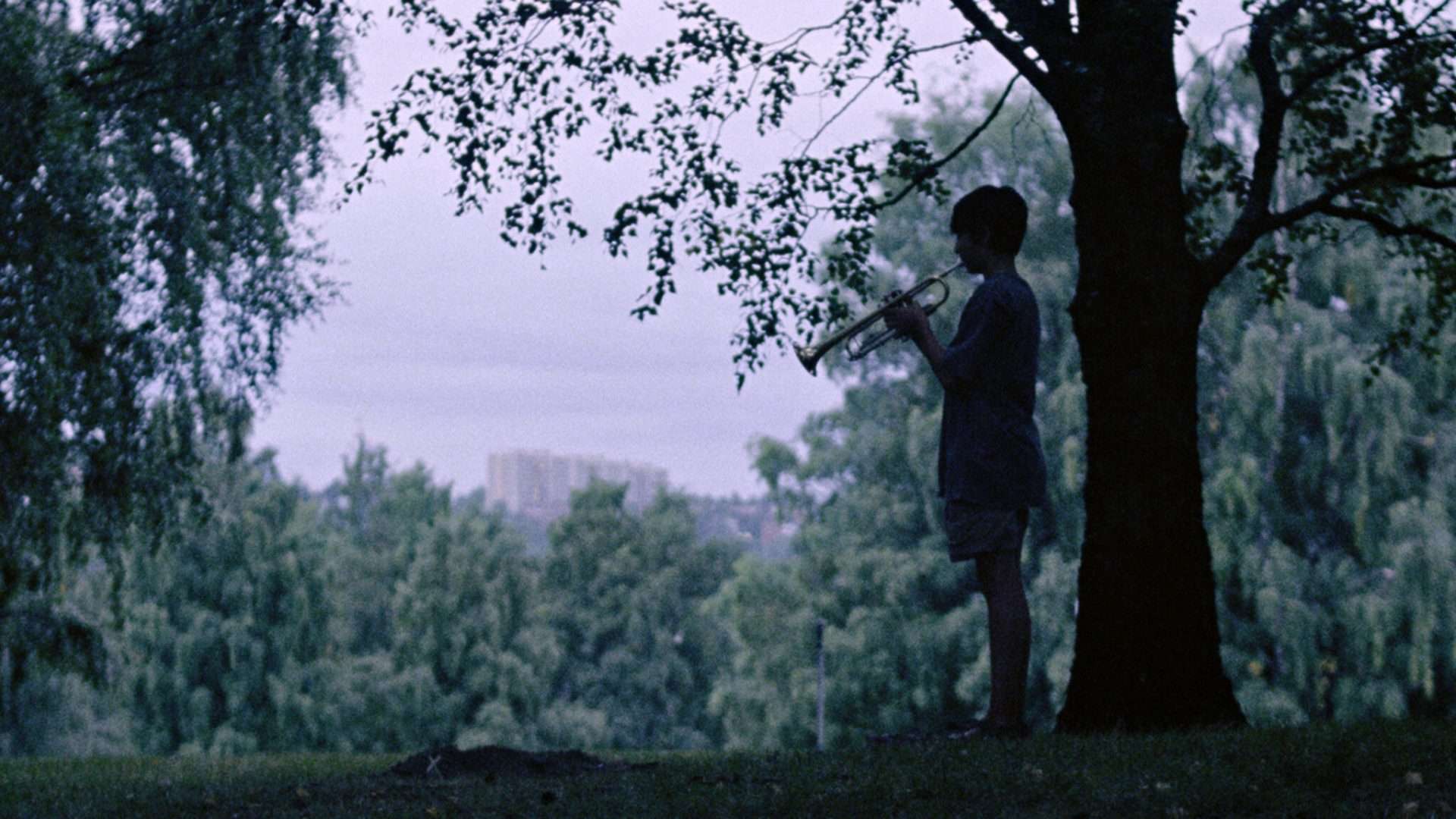
The oppressively bleak, hot summer is interrupted by an electrical storm. We have also been seeing some of the characters being affected by a migraine, while Eva hears a similar high-pitched noise on the radio. As she tries to fix the frequency on her car radio, she probably gets hit by a stray current. We see her car skidding off the road. As the car alarms at the parking lot blare, Mahler, who is sitting near the grave of his grandson, holds his head in pain. All the electricity dies out in the town, and presumably, the dead start to rise.
David gets a phone call from the hospital, where he is informed that his wife has passed away and to come to the hospital. As he comes to the hospital after completing a successful comedy set, the corpse of his wife, whom he had been conversing with just this morning, sends him into a fugue state of bereavement. Electricity resumes operation, and Mahler distinctly hears movement in the coffin at his grandson’s grave.
He drives and returns to the graveyard after picking up a shovel from his apartment, digs his grandson’s emaciated, decomposing, yet surprisingly alive body up, and carries it to Anna’s apartment. Tora is woken up by a noise in her apartment. Wondering whether someone had broken in, she gets up from bed and walks to her kitchen, only to find that her beloved Lisbet had walked back to their apartment after waking up from death. At the hospital, David sees Eva’s dead body starting to breathe again. The doctor in charge expresses surprise, explaining that her heart has started beating by itself all over, albeit very slowly, and her oxygen level was too low to consider anyone alive, which truly baffles her.
How do the families deal with this development?
For Mahler, it’s all about maintaining a semblance of normalcy. He brings in the undead body of his grandson and washes it off the decomposed skin before singing him a lullaby to sleep. When Anna enters her house after a long, hard day at work, she listens to a croaking and painful sound coming from her son’s room. The sight of her son causes her to react almost violently. She lights up a cigarette, but failing to extract any pleasure from that action, she wraps her head in plastic to choke herself to death. She is only rescued by her father, who runs in upon hearing Anna’s body fall due to her losing consciousness and helps in cutting the plastic off, letting her breathe normally.
The shock at witnessing the body of her son being exhumed fades away from Anna once she realizes that she has effectively been given a second chance. Pragmatic thoughts flit across her mind—her son needs to be in the hospital—but grief has another say in the matter, as evidenced by her father pleading to her not to inform the police outside the door that Elias is with us. It is clear, from the excavators around the graveyard, that this is a widespread phenomenon.
Mahler and Anna decide to move, driving their speedboat across the lake to the other side of the bank at a summer house. There, Anna decides to care for Elias but slowly realizes that her son isn’t entirely back. She had to use eyedrops back at their house to help Elias open his eyes, help him drink up the juice, and help him excrete by pressing on his belly.
For David and his family, the film focuses more on their reactions than on Eva being undead and exploring it. It’s an interesting choice, especially in how it chooses to explore the different reactions of each of the family members. David tries to contact the hospital and figure out, through the medical professionals, whether science could answer what is occurring to his wife. He also has to try to console his son and convince him that his mother will return, at the cost of making his son also scared of the event occurring. For their daughter, her method to process grief would be to go spend the night and the next day with her boyfriend in the city and repeatedly listen to the final voice message her mother had sent her, reminding her that she will always love her, irrespective of her daughter’s reciprocations.
Finally, Tora is happy to find Lisbet back with her safe and sound, and she tries to fix up her face with makeup and dress her up. For the most part, the undead Lisbet remains immobile, but when Tora tries to feed her, Lisbet almost tries to bite her hand off, leading to a sense of foreboding that this wouldn’t last for much longer. Tora tries to maintain normalcy by fixing her garden and prattling on about the peonies not having blossomed until the next year. It leads to a heartbreaking scene of the two of them sharing a dance, scored to Nina Simone’s cover of Jacques Brel’s “Ne Me Quitte Pas.” The scene ends with Tora drinking wine and downing lots of sleeping pills before lying in bed with her lover for a final rest. She had the chance, however brief, to bid her beloved a final goodbye.
Handling the Undead (2024) Ending Explained:
Do the undead finally start being aggressive?
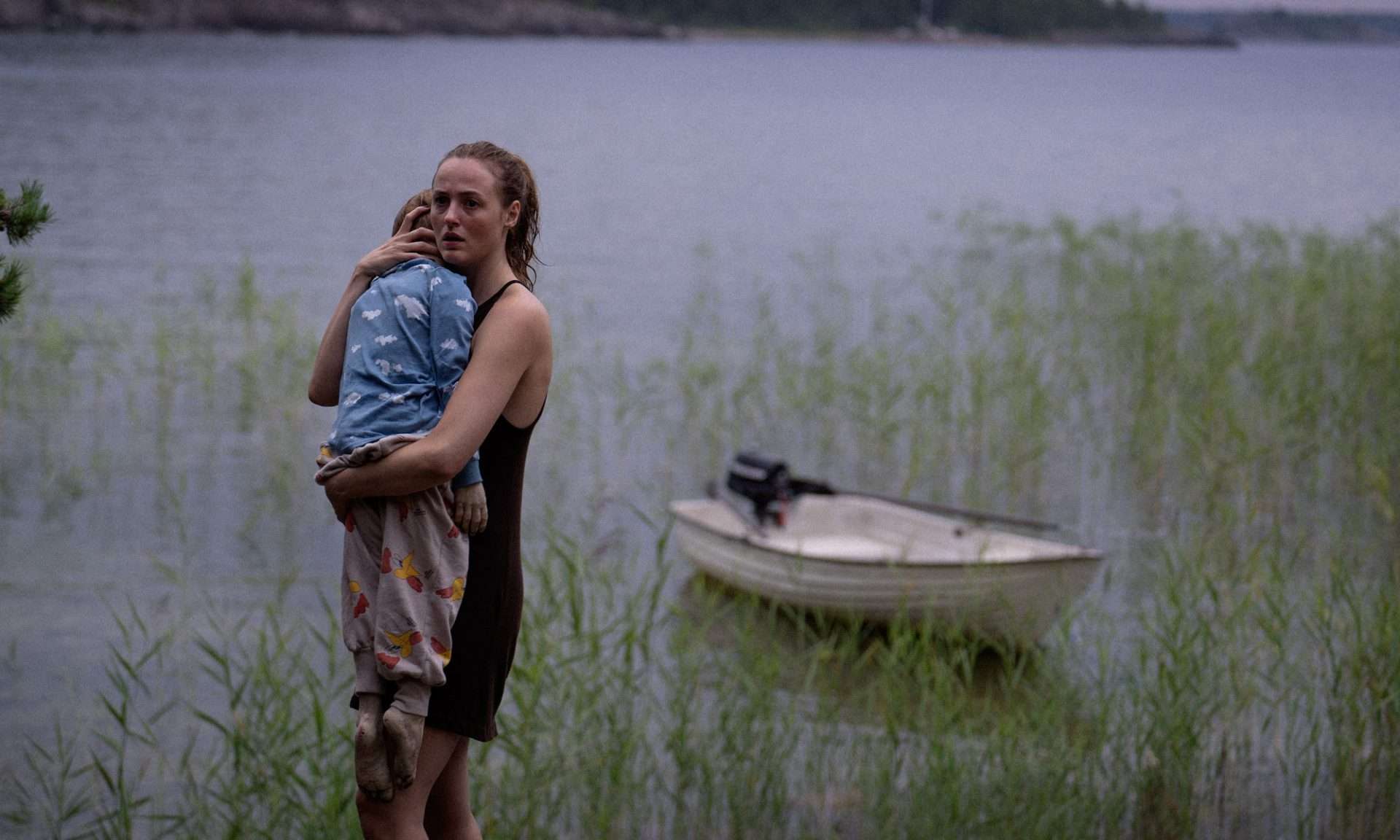
The next morning is Kian’s birthday, and for that occasion, after surprising him with a birthday cake on his bed, David gifts him a rabbit and also invites his children to finally meet their mother. However, the kids would be in for a rude awakening because, as David shows the rabbit Kian had been gifted, the undead Eva grabs the rabbit too tightly and crushes its windpipe without exhibiting any remorse or emotion. As the trio walks out of the hospital, Flora voices what they are all experiencing: “Mom is dead.” Whatever this undead creature is, it’s not their mother.
The scene shifts to the lake house, where Anna is looking after her son. Her paranoia starts to creep in once she sees another zombie loitering around the forest area. As Mahler returns from the mainland with supplies, he sees Anna terrified and ready to leave with their son. Mahler, not one to leave his grandson and daughter unprotected, attacks the zombie.
The movie starts winding down by cutting back to Tora and Lisbet’s apartment, where we see the undead Lisbet having already eaten through Tora’s brain. Anna watches, horrified, as Mahler is overpowered and mauled by the zombie before she climbs on the boat, carrying Elias on her shoulder. As the moment of reckoning dawns on all the survivors, we witness Kian burying the rabbit who had his company for such a short period, David breaking down in sorrow, and Flora lying in bed, lost in her grief. The movie finally ends with Anna, in the middle of the lake, looking at her son for one final time, listening to his soft croaking, before promising him that she would see him again and dropping him into the lake as if to return the wish asked by every man who had lost a loved one because the price was too high.
Handling the Undead (2024) Movie Review:
The Kubler-Ross model of the five stages of grief—denial, anger, bargaining, depression, and acceptance—is not an exact science. Emotions, while the result of brain chemistry, don’t entirely work on a set pattern or a specific chronology, especially in processing trauma. “Handling the Undead” is a zombie movie in the gentlest of terms, instead highlighting the bargaining perspective of the stage of grief: “What if I can get that person back for a couple of moments?” It’s a fascinating lens to look into essentially a pulp, supernatural horror and recontextualize it through metaphor, contemplating the processing of grief and how that process varies for every single individual.
It’s in the individualism of the process that the triptych nature of the narrative falls apart. There is no sense of a hyperlink present within the narrative, and for all intents and purposes, this would have been a cleaner film if designed as an anthology. Perhaps that could have given the film more breathing room for character development because intense moments of grief or time-stopping set pieces aren’t enough for a viewer to connect with the characters. It also didn’t help that the overarching narrative isn’t the point, and thus, an easy criticism could be laid at the feet of “Handling the Undead”—it doesn’t have enough of a story to warrant such a slow-burn treatment.
Perhaps that is true in some instances, but it makes sense that the story that does impact profoundly—the Elias and Mahler story—works because of the oppressive bleakness, the slow-burn treatment, and, of course, the fantastic performances of both Renata Reinsve as Anna and Bjorn Sundquist as Mahler. Sundquist, especially, is heartbreaking, as the bereaved grandfather is trying everything possible to ensure what little time he can extract with his grandson through the miracle being granted to him. The love story of Tora and Lisbet is a beautiful one in conception, but in execution, it has too little time to marinate. It does boast of one set piece where the two septuagenarians slow dance to the Nina Simone number that truly hammers home the melancholy tinge throughout the frame.
The potency stemming from the conventional horror moments works because they haven’t been applied throughout the narrative but instead slotted towards the end. “Handling the Undead” and its director, Thea Hvistendahl, should be praised for maintaining a carefully curated, oppressively bleak atmosphere with their muted cinematography and disquieting sound design. It teases ambiguity and a sense of pervasive dread and loss throughout the film. But as explained above, due to the lack of depth in the characters of the two other families, the slow-burn treatment tends to feel glacial, and thus engagement for a movie so steeped in bereavement as a theme becomes difficult. It is still a fascinating approach to a done-to-death genre, with some lovely performances at its core, but slotting it within the horror genre solely would be doing “Handling the Undead” a disservice.





![American Siege [2021] Review: Dull and Boring, Even by B-Movie standard](https://79468c92.delivery.rocketcdn.me/wp-content/uploads/2022/01/American-Siege-2021-768x432.jpg)

